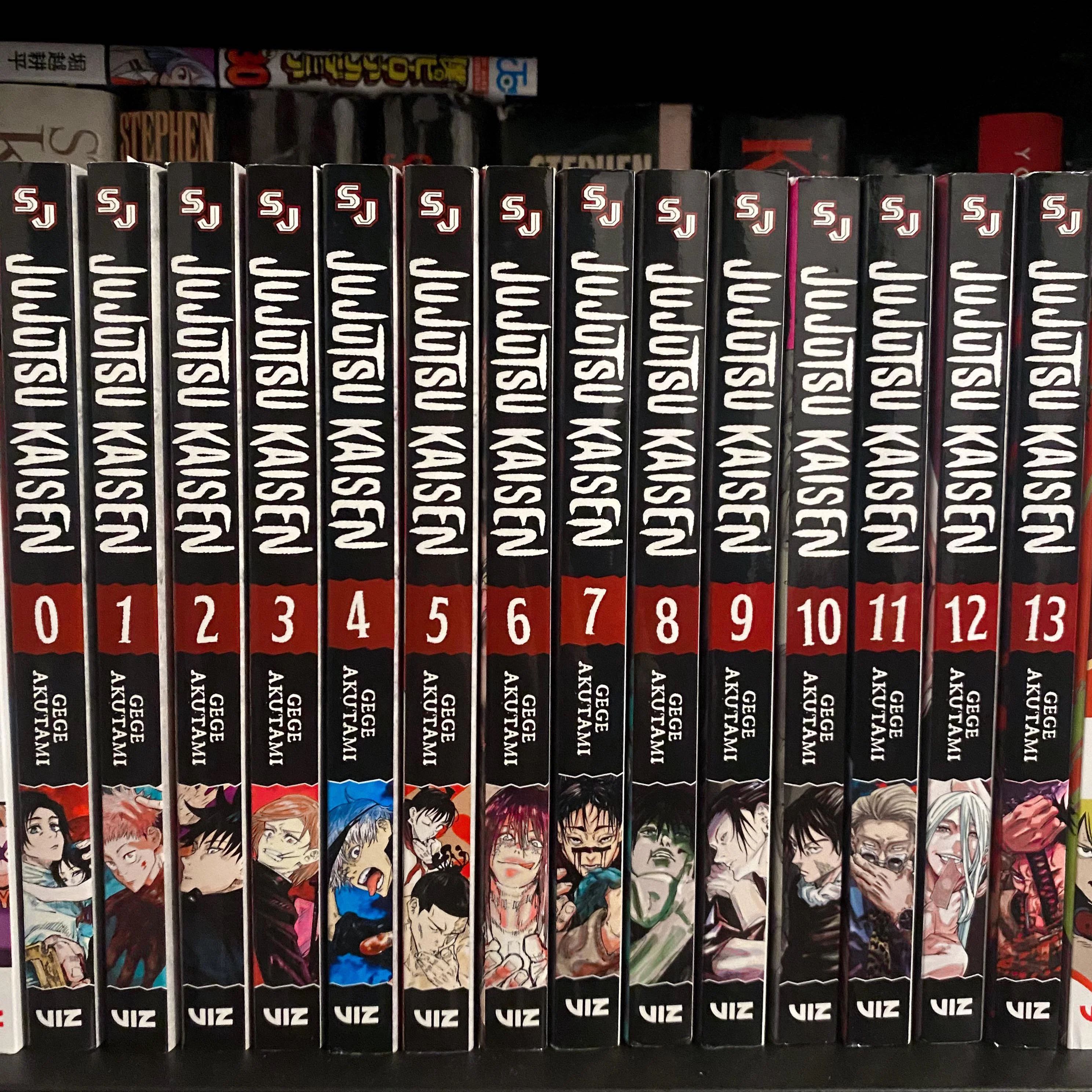JJK manga volumes, yo! This ain’t your grandma’s manga. We’re diving deep into the sales charts, fan theories, and artistic evolution of Jujutsu Kaisen. From the hype surrounding each new release to the wild discussions sparked by plot twists, we’re breaking down everything you need to know about this mega-popular series. Get ready to geek out!
We’ll be exploring the series’ explosive popularity, analyzing critical reception both from pros and fans, and tracing the artistic and narrative growth throughout the volumes. Think sales figures, fan reactions, art style changes – the whole shebang. We’re even gonna touch on how JJK has impacted the entire anime/manga landscape and what it all means for the future. Buckle up, it’s gonna be a wild ride.
Discover more by delving into chainsaw man manga characters further.
JJK Manga: A Deep Dive into Sales, Reception, and Impact: Jjk Manga Volumes
Yo, manga heads! Jujutsu Kaisen’s been blowin’ up, and for good reason. This ain’t your grandpappy’s shonen—it’s got dark fantasy, killer action, and characters you can’t help but root for (or hate, depending on the villain). Let’s break down the hype, from sales charts to critical acclaim and the impact it’s had on the whole manga game.
JJK Manga Volume Sales and Popularity
JJK’s sales have been straight fire. We’re talking numbers that rival some of the biggest shonen titans. While precise, constantly updated sales data is hard to come by, we can still paint a pretty solid picture of its success.
A line graph would show a steep upward trend from the first volume, with each subsequent volume experiencing significant sales, possibly exceeding the previous one’s initial release numbers. Peaks would likely correspond with major story arcs or anime adaptations. Compared to series like My Hero Academia or Demon Slayer, JJK’s sales trajectory would showcase a rapid rise to prominence, perhaps initially slower but rapidly overtaking others in its timeframe.
| Volume | Release Date | Initial Print Run (Estimated) |
|---|---|---|
| 1 | March 4, 2018 | 500,000+ |
| 2 | July 4, 2018 | 600,000+ |
| 3 | November 2, 2018 | 700,000+ |
Critical Reception and Fan Reactions to JJK Manga Volumes
Critics and fans alike have been mostly hyped about JJK. The series has garnered praise for its unique blend of action, horror, and compelling characters. However, like any popular series, there have been some contrasting opinions.
| Volume | Publication A | Publication B | Publication C | Publication D |
|---|---|---|---|---|
| 1 | “Fresh take on the shonen genre” | “Intriguing premise, but pacing feels slow” | “Art style is unique and captivating” | “Characters are well-developed and relatable” |
| 2 | “Action sequences are top-notch” | “Some plot points feel rushed” | “World-building is impressive” | “Emotional depth is lacking in some areas” |
Fan discussions often center around major plot twists, like the introduction of Sukuna or Gojo’s past, with some praising the unexpected turns while others find them predictable or unsatisfying. Early volume discussions focused more on character introductions and world-building, while later volumes saw more debate on complex plot developments and character arcs.
Artistic and Narrative Evolution in JJK Manga
Gege Akutami’s art style has evolved noticeably throughout the series. Early volumes feature a slightly rougher style, with simpler character designs and less detailed backgrounds. As the series progressed, the art became increasingly polished, with more dynamic panel compositions, detailed character expressions, and intricate background elements. The shift is especially apparent in the portrayal of cursed spirits, which become more grotesque and terrifying as the story advances.
Narrative shifts are tied to the introduction of new arcs. The Shibuya Incident arc, for instance, marked a significant turning point, introducing a darker and more intense tone. The pacing initially felt more deliberate, focusing on character development and world-building. Later volumes, especially during major arc climaxes, adopted a faster pace to heighten the tension and excitement.
JJK’s Influence on the Anime/Manga Industry
JJK’s success has undeniably impacted the broader anime/manga landscape. Its dark fantasy elements and unique blend of action and horror have influenced other series in the genre, inspiring similar themes and styles. The popularity of JJK has also led to a surge in merchandise and licensing opportunities.
- Numerous figures and merchandise
- Video game adaptations
- International distribution deals
- Collaborations with other brands
Thematic Exploration in JJK Manga Volumes

JJK explores several complex themes, including friendship, loss, morality, and the burden of responsibility. These themes are woven throughout the narrative, with specific examples highlighted in different volumes. The growth of characters like Yuji Itadori and Megumi Fushiguro showcases the impact of loss and the choices they make in the face of adversity. The setting of Jujutsu High and the expanding world of cursed spirits and sorcerers evolves alongside the characters’ personal journeys.
The portrayal of characters changes significantly across the volumes. Yuji, for example, starts as an innocent high schooler and transforms into a powerful, morally complex figure grappling with his role as Sukuna’s vessel. The relationships between characters, such as Yuji’s bond with Megumi and Nobara, deepen and are tested throughout the series.
So, there you have it – a total breakdown of the JJK manga volumes. From humble beginnings to global domination, this series has truly left its mark. Whether you’re a seasoned JJK fan or just starting your journey into the cursed world of Jujutsu High, hopefully, this deep dive has given you a fresh perspective and a whole new appreciation for the artistry and storytelling behind this phenomenal manga.
Now go forth and spread the JJK love!


